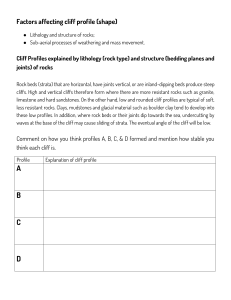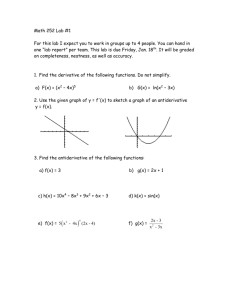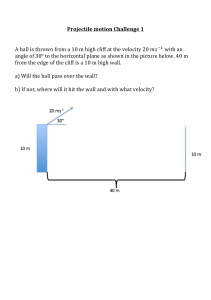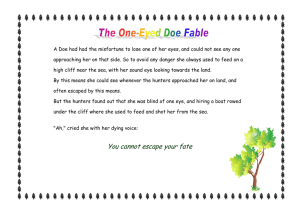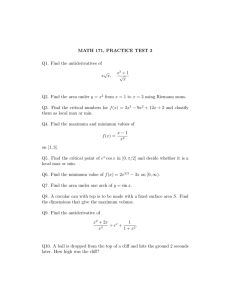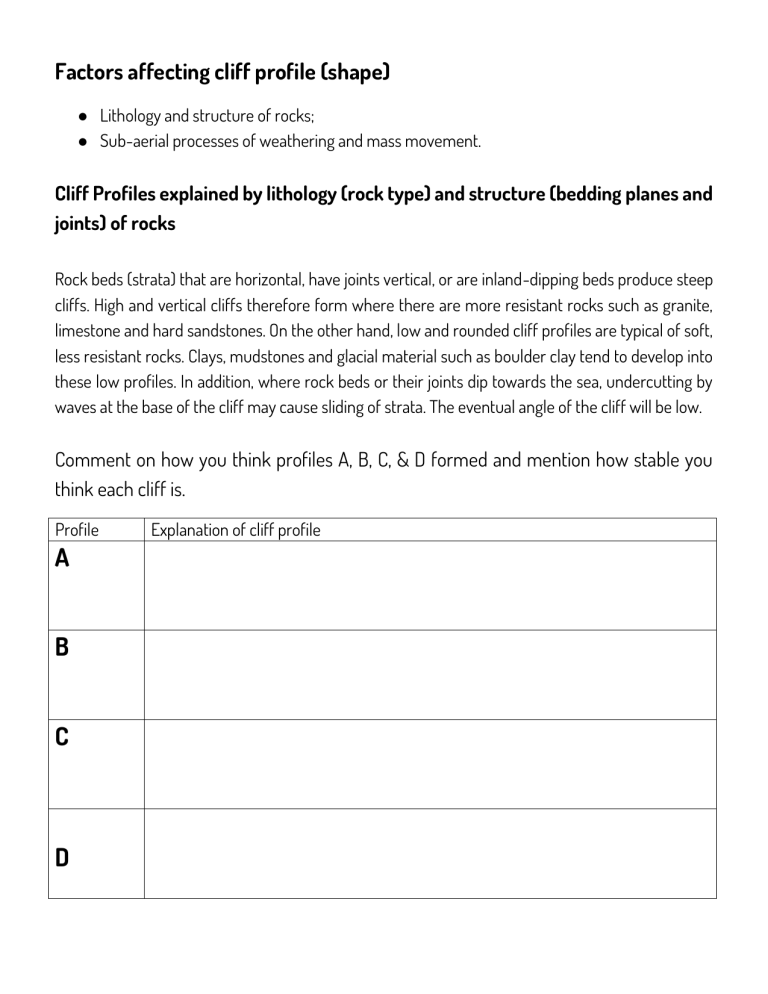
Factors affecting cliff profile (shape) ● Lithology and structure of rocks; ● Sub-aerial processes of weathering and mass movement. Cliff Profiles explained by lithology (rock type) and structure (bedding planes and joints) of rocks Rock beds (strata) that are horizontal, have joints vertical, or are inland-dipping beds produce steep cliffs. High and vertical cliffs therefore form where there are more resistant rocks such as granite, limestone and hard sandstones. On the other hand, low and rounded cliff profiles are typical of soft, less resistant rocks. Clays, mudstones and glacial material such as boulder clay tend to develop into these low profiles. In addition, where rock beds or their joints dip towards the sea, undercutting by waves at the base of the cliff may cause sliding of strata. The eventual angle of the cliff will be low. Comment on how you think profiles A, B, C, & D formed and mention how stable you think each cliff is. Profile A B C D Explanation of cliff profile Cliff Profiles explained by sub-aerial processes (weathering and mass movement) Cliff profiles are constantly affected by mass movements. For mass movements to happen, the rocks must be weakened by the processes of sub-aerial weathering. Rockfalls and toppling take place on hard-rock cliffs and contribute a lot to the eventual profile. Rock blocks are loosened by weathering and fall to the cliff foot. Toppling is common in cliffs with a joint structure producing columns in the rock. In softer-rock cliffs, the role of groundwater in mass movement processes becomes very important and sliding and slumping are more common. Explaining cliff profiles Go to this site: http://www.geography-site.co.uk/pages/physical/coastal/cliffs.html Describe the factors that have influenced the formation of the cliff profiles below.
